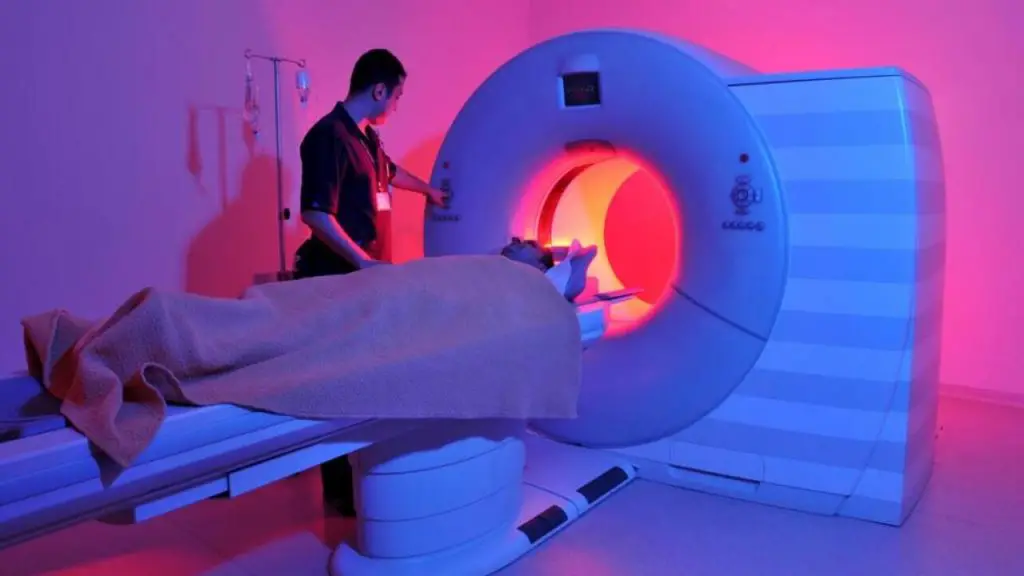Magnetic resonance imaging (MRI) technology has become increasingly popular as a diagnostic tool in recent years. MRI is a non-invasive procedure that uses magnetic fields and radio waves to create detailed images of the body. These images can be used to detect abnormalities, assist with diagnoses, or monitor treatment progress over time.
This article covers everything you need to know about how long does an MRI takes, including an explanation of what happens during an MRI scan and its different phases. You will also learn about common pre-MRI preparation procedures and aftercare advice.
What Is MRI and How Does it Work?

MRI stands for Magnetic Resonance Imaging, a non-invasive procedure that uses magnetic fields and radio waves to create detailed images of the body. When a person lies inside the MRI scanner, a narrow tunnel-like magnet will be placed around them with a large rotating wheel of electromagnetic coils that generate a strong magnetic field.
This creates an environment in which the protons inside water molecules line up in a certain direction. The MRI machine will then emit a specific (low-intensity) radio frequency that will change the direction of the protons inside the water molecules, which will be detected by the scanner.
The scanner will transform these signals into a black-and-white image of the patient’s body, which can be manipulated and analyzed by a radiologist to look for possible diseases or defects inside the body.
How Long Does an MRI Take?
A single MRI scan may take anywhere between 30 and 90 minutes, with the average being around 50 minutes. The duration will vary depending on your specific body and condition. MRI scans consist of two phases.
The first is the imaging phase, during which the MRI machine will produce the images. This part is relatively quick and lasts around 10 minutes. The second phase is the scanning phase. It involves moving you into different positions so that the radiologist can create as comprehensive an image as possible.
Before You Go to the Scanning Room
Before going to the scanning room, you will be asked to remove any metal items from your body, such as jewelry, watches, piercings, hairpins, pens, or loose change. This is to avoid the machine being affected by the metal and producing inaccurate results.
It is also important to avoid eating or drinking anything (except water) in the 4 hours before your MRI scan. This is because food, beverages, and certain medications can contain substances that can cause damage to your internal organs. Depending on your specific condition and the examination, you might be required to do blood work before the MRI scan.
1. MRI Procedure – First Phase
As we mentioned, the MRI scan consists of two phases. The first phase is the imaging phase, during which the MRI machine will produce the images. This part is relatively quick and lasts around 10 minutes.
The MRI machine will create a strong magnetic field that is used to create an image of the inside of your body. A small part of your body will be inside the MRI machine during this phase. The radiologist will determine the best place for you to place your body inside the MRI machine.
The radiologist will then direct you to lie as still as possible, with your eyes closed, for the remainder of the phase. During this time, you may experience a slight tingling sensation due to the high-strength magnet.
The exact position of your body inside the machine will depend on the type of MRI scan you have been scheduled for. Some of the most common MRI examinations and their respective position inside the machine include:
- CT Scan: The scanner will be placed on the chest.
- MRI Scan: The scanner will be placed on the lower abdomen.
- PET Scan: The scanner will be placed on the lower abdomen.
- Nuclear scan: The scanner will be placed on the chest.
2. MRI Procedure – Second Phase
During the second phase, the radiologist will direct you to move into various positions in order to create a more comprehensive image. This phase may take anywhere from around 20 to 40 minutes, depending on the type of MRI scan you are undergoing. During this phase, you will be asked to perform different movements in order for the radiologist to create a more detailed image of your body.
The movements might include lying on your back, then on your side, and finally on your stomach, or vice versa. You may be asked to raise your leg or arms at times during the procedure. You will be given instructions on what movements to perform during the MRI scan.
It is important to follow the radiologist’s instructions carefully so that the MRI machine can produce the most accurate images possible. Irregular movements may produce blurry or incomplete images, or may even prevent the MRI machine from producing any images at all.
After the Scanning Room – What to Expect
After the scanning room, you will be directed to a waiting room where you can rest and wait for the results to be examined. A radiologist will examine the images and provide a diagnosis based on the abnormalities they have detected. The imaging results will be sent to your physician in the form of a report, and you will be consulted on your next treatment steps.
After the MRI scan, you may experience a bit of a headache due to the noise of the machine and the vibrations that it produces. You can take painkillers in these cases, but avoid taking them too soon after the MRI scan since they may interfere with the imaging process.
Final Words
MRI is a non-invasive procedure that uses magnetic fields and radio waves to create detailed images of the body. These images can be used to detect abnormalities, assist with diagnoses, or monitor treatment progress over time. A single MRI scan may take anywhere between 30 and 90 minutes, with the average being around 50 minutes.
Additional Contents
- How Much Does It Cost to Wrap a Car
- What Does Low Chloride Mean In A Blood Test
- What Does MPV Mean In A Blood Test
- What Does a Car Oxygen Sensor Do
- What Does a Bug Bite Look Like on a Dog


